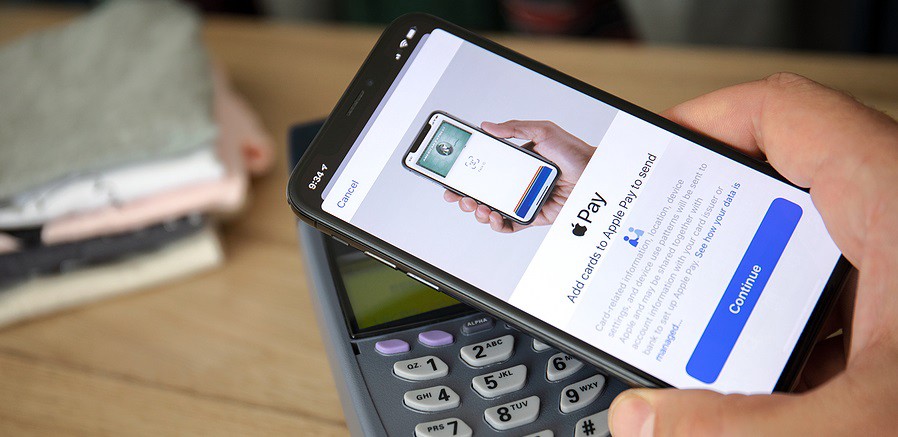It makes about as much sense as giving out your credit card.
What happens when you give out your phone number or email address? You have no control over what happens to it. It can be misused, transferred, put on a list, or sold. Once you give it out — you can’t take it back. Online databases are routinely hacked to steal these lists and re-sell them. Once your phone number or email address is compromised, it’s a lot of work to switch to a new one.

Contact information has exactly the same problem that credit cards have. When you give your credit card to a merchant or website, they get the same numbers that you give every other company you buy from. Anyone with those numbers can debit your account over and over. If you close the account, you will be doing a lot of cleanup work to get your new payment info to everyone who needs it.
The good news: the problem is being solved on the Payment Tech side. And the same ideas can solve Contact Info. The future looks like Apple Pay for Contact Info.

What’s Wrong With Contact Info?
Let’s get specific about what’s wrong with contact info today. Most people give out their phone and email to hundreds of people and companies over a period of several years.
Problem #1:
All those hundreds of recipients (from your best friend, to a random online store, to that Ex you never want to talk to again) all have the same contact info for you. For the most part, anyone with your contact info has an equal ability to grab your attention. Any change you make affects everybody. Anybody that you “block” can switch their phone or email to get around the blocking.
Problem #2:
You don’t have a good list of who has your contact info. Your information is stored in their systems, and you don’t have any visibility or editing rights. In the contacts list on your smartphone today, you have people whose information is wrong or outdated. Other people have information for you that’s out of date or incorrect. And there’s no good way to identify or fix the problem.
Problem #3:
It’s a race to the bottom. Like Gresham’s law, bad calls and emails drive out good ones. Most phone calls and emails today are robots trying to get the attention of humans. Robo-texting is rising fast. When a human exposes an API for the robots to hit, the robots are going to pile on and consume attention until the human stops answering. So now it’s getting harder to make human-to-human contact because people don’t answer the phone or read their email.

The Resulting Mess
The result is the mess we see today in Contact Info. Imagine you have an old friend who has some outdated contact information for you. They probably can’t find your new contact info anywhere online or in a directory. If they find your phone number and call, you won’t pick up the phone because you don’t know their number by CallerID. Your email SPAM filter might put their email in the Junk folder before you ever see it.
But your phone and email will still be saturated with low-value calls and emails from robots and people selling things you don’t want to buy — and you’ll pick it up 150 times today to deal with the onslaught.
It’s been widely predicted that new communication networks will solve the problem by leaving email, text and phone behind. From WhatsApp to #Slack, there are lots of choices on the consumer and business side. But none of these choices has enough market share to be a useful default -you can’t assume the other person is on the same network you’re on.
They aren’t compatible with each other. And they don’t do a good job of reverse-compatibility with phone, text and email. These options have had a decade to replace phone numbers and email addresses — and they haven’t been able to do it.

How is the Problem Being Solved on the Payment Side?
New payment systems take a simple, but radical approach. One payment code per transaction. If I want to pay for a $41.25 pair of shoes, My smartphone gives the merchant a single-use code. The code may also be limited to the correct dollar amount, and could be tied to the merchant identity. The result — this payment code is worthless to anybody else. There’s no point in stealing it.
Apple Pay is the leading example of this approach. Beyond single-use codes, Apple Pay gives you a place to manage subscriptions. You have the data on what you’re subscribed to, all in one place where you can edit it. It’s the opposite of letting a dozen vendors have your credit card to charge when they see fit.
Apple Pay is designed from the ground up to be a safer, better system.

Patches and Partial Fixes
The popular “burner” approach for payment systems and contact info is only a partial fix.
Privacy.com and other services offer “burner” credit cards. They allow the user to generate a virtual credit card that is easy to cancel later. This is more of a patch or partial fix. The user has to take extra steps to generate the virtual card, and until cancelled it has the same downsides as a real credit card.
And the same approach has been tried for Contact Info. Apps like Burner allow you to generate “burner” phone numbers and email addresses. For example, you might generate a phone number and email to use for a Craigslist ad to sell some furniture. The “burner” phone numbers and email addresses have the same problems as a real phone number or email address (until you burn them). They don’t solve the problem for the “real” phone and email you are using for everything else.
The “burner” approach has the advantage that it doesn’t seek to change the other person’s behavior. They accept your credit card or phone number as usual, unaware that it’s going to be burned tomorrow. It has perfect backwards compatibility. However, these models have been unable to grow virally for the same reasons. The person giving out a burner phone or credit card is not recruiting the recipient into a new and better approach.

Apple Pay for Contact Info
How can we use the Apple Pay model to solve Contact Info? A unique code per transaction is not practical. It doesn’t work to have a new email address for every email or a new phone number for every call.
But we can have a unique address for every recipient. Imagine having a unique #Slack channel for your conversation with each person in your Contacts list. Each conversation has a different address, and the history is stored for the conversation.
The unique address should be a URL. It should be a web link that any recipient can follow from any browser, such as http://ContactLink.com/23fasf3244
On arriving at that page, the recipient activates the conversation by identifying themselves and providing their reply-back email and phone. Now the link is non-transferrable and tied to the recipient’s identity. From that page, they are able to call, text, email or get on your calendar.
When you meet the next person, you will give them a different unique URL for their conversation with you. Each conversation page stores a history across email, text, phone and calendar. You are giving them contact info that they can’t transfer, sell, or put on a list for robocalls or mass emails.
On each URL, you can limit the ways the other person can contact you. For example, you might take away phone call and calendar permissions, leaving only email and text. Or, you might block the other person entirely. The blocking is effective because they never had your phone number or email address.
If you change your phone number or email address later, it’s no problem. The other person goes to the same URL as before, but the website knows to call your new number or send the email to your new address. You change your contact info in one system where you have visibility and edit rights, and it applies to everyone you communicate with.

How Soon Is Now?
What’s presented in this article is only a part of the solution. Real people will upgrade to a URL as your new contact address, but all the companies and websites you do business with will not. You need a phone number and email to give them, that blocks unwanted marketing but still allows important communications to reach you.
You also have that old phone number and email address, that’s hopelessly compromised by robo-calls and email spam… but someone valuable just might need it to get in touch. You need a solution that lets people from your past to find you and get in touch — without opening the door to the robo-calls and spam-bots of the world. And ideally, it allows new but valuable contacts to find you and get in touch as well.
In future articles, I will present more details on these additional problems and how to solve them.







